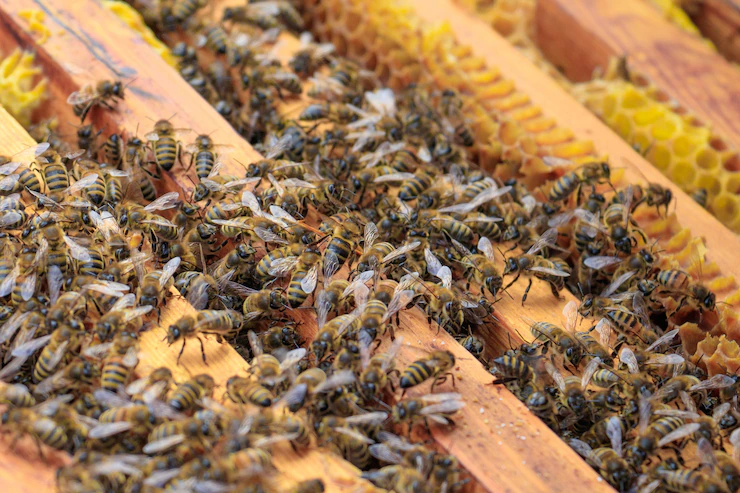When engaging in beekeeping or bee farming in South Africa, it’s important to be aware of various infections and diseases that can affect bees. These conditions can significantly impact the health and productivity of your bee colonies. Here are some infections and diseases to watch out for:
- American Foulbrood (AFB):
AFB is a bacterial disease caused by the spore-forming bacterium Paenibacillus larvae. It is highly contagious and can lead to the death of infected larvae. Infected colonies exhibit a foul odor and a ropiness in the brood. Proper hive management and regular inspections are crucial to prevent its spread. - European Foulbrood (EFB):
EFB is another bacterial disease caused by the bacterium Melissococcus plutonius. It affects the brood, resulting in irregularly shaped, twisted, and discolored larvae. EFB is less severe than AFB but can weaken colonies and make them susceptible to other issues. - Nosema:
Nosema is a fungal infection caused by the microsporidia Nosema apis and Nosema ceranae. It affects the digestive system of bees, leading to reduced lifespan and weakened colonies. Symptoms include dysentery, rapid weight loss, and overall reduced bee activity. - Varroa Mites:
Varroa destructor is a parasitic mite that feeds on honeybees, particularly on their developing brood. These mites can weaken the bees and transmit various viruses, leading to colony collapse if left uncontrolled. Regular monitoring and effective mite management strategies are essential. - Small Hive Beetle:
Aethina tumida, commonly known as the small hive beetle, is an invasive pest that can cause significant damage to beehives. The adult beetles lay eggs in hives, and the larvae feed on honey, pollen, and bee brood, eventually leading to honey fermentation and hive destruction. - Chalkbrood:
Chalkbrood is a fungal infection caused by the fungus Ascosphaera apis. It primarily affects bee larvae, turning them into chalk-like mummies. Infected larvae may fail to pupate and die prematurely, reducing colony strength and productivity. - Sacbrood Virus:
Sacbrood virus (SBV) affects bee larvae, causing them to turn yellow or white and adopt a sac-like appearance. Infected larvae typically die before pupation. SBV is highly contagious and can spread rapidly within a colony, impacting brood production.
To maintain healthy bee colonies, it’s crucial to implement good hive management practices, such as regular inspections, proper sanitation, and appropriate medication when necessary. Additionally, staying informed about emerging threats and consulting with local beekeeping associations or experts can provide valuable guidance for disease prevention and management in your specific region.
Join 'Farmers Mag' WhatsApp Channel
Get the latest Farming news and tips delivered straight to your WhatsApp
CLICK HERE TO JOIN






